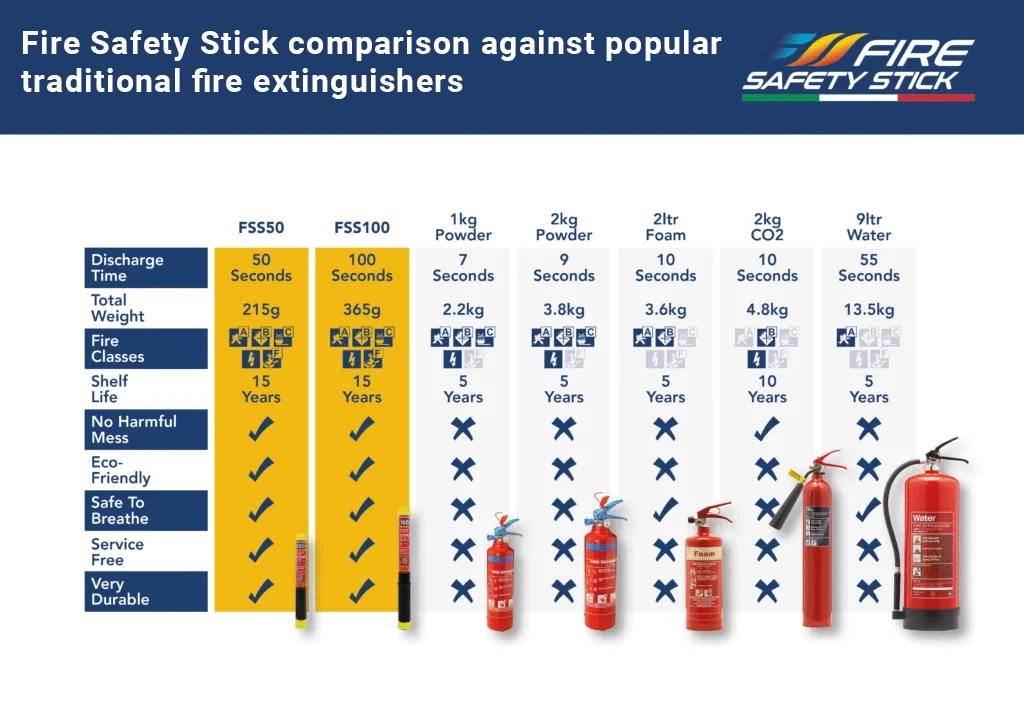Your basket is currently empty!
About The Fire Safety Stick
What is the Fire Safety Stick?
The Fire Safety Stick (FSS) is a manual, portable fire extinguishing device that employs a unique technology distinct from conventional fire extinguishers. It uses a Potassium ion jet to interrupt the fire’s chain reaction, effectively halting its progression. This process disrupts the fire’s auto-catalytic cycle, preventing further combustion.
Unlike traditional extinguishers, the Fire Safety Stick is composed of stable, solid minerals and does not contain gas or pressurised components. The aerosol-like jet is only produced when the charger at its base is struck. This jet is free of thrust and consists of an inert salt that releases gases already present in the atmosphere, making it a clean and environmentally friendly solution.

How does the Fire Safety Stick work? The Chemistry:
The FSS extinguishes fires through saturation. Additionally, its slow biodegradation in the environment helps reduce the likelihood of subsequent fires.
The extinguishing mechanism involves two distinct reactions: one physical and the other chemical. The physical reaction is driven by the tendency of potassium ions (or free radicals) to oxidize rapidly upon exposure to air. When alkaline salts come into contact with oxygen, they consume large quantities of it, effectively depriving the fire of the oxygen it requires to sustain combustion.
The chemical reaction, on the other hand, arises from the stable bond formed between potassium particles and the fire’s combustion particles. Through these two reactions, a rapid oxidation process occurs, instantly transforming the jet from a solid state into a gaseous state, thereby releasing potassium particles. These atoms actively intercept and disrupt any free radicals generated by the fire’s natural chain reaction, halting the combustion process.
Potassium exhibits strong inhibitive properties due to its low ionisation energy. The extinguishing agent used in this process consists of potassium nitrate (KNO₃), an organic oxidizer, and a plasticizer resin.
When potassium nitrate reacts within the extinguisher, it decomposes, producing an aerosol primarily composed of free potassium (K⁺) radicals and nitrogen (N2), an inert gas. Upon discharge, this aerosol interacts with the fire. The potassium radicals (K⁺) bind with the oxygen involved in combustion, effectively disrupting the fire’s chemical reaction and extinguishing it.
At the conclusion of the extinguishing process, the following substances are released into the atmosphere:
- As a solid: Potassium particles that have reacted with oxygen, ranging in size from 3 to 4 microns. These particles are invisible to the naked eye and heavier than air, causing them to disperse and settle on the ground in negligible quantities.
- As a gas: Nitrogen, an inert gas that naturally comprises approximately 78% of the air we breathe.

